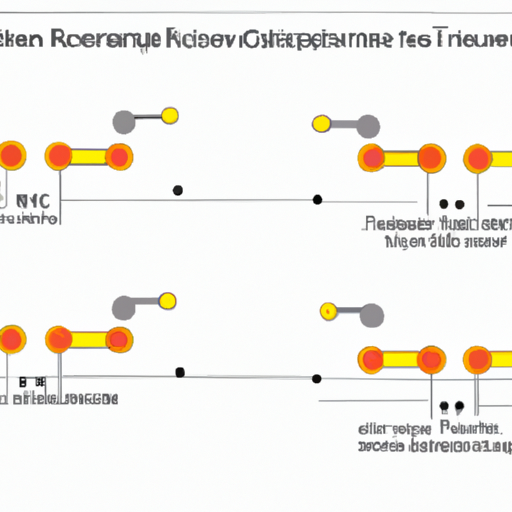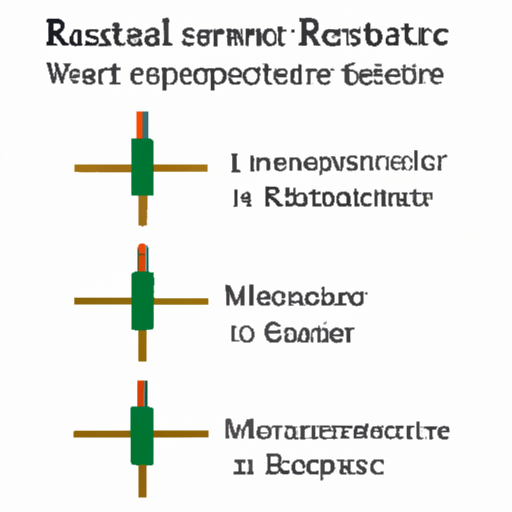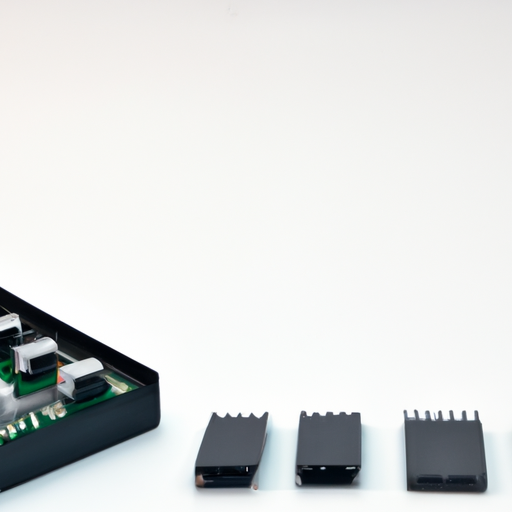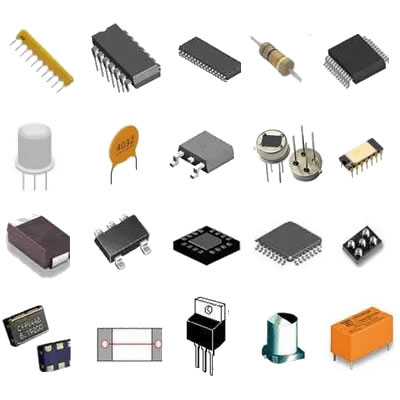How should spot resistors be selected for their role in the circuit?
How Should Spot Resistors Be Selected for Their Role in the Circuit?
I. Introduction
In the world of electronics, resistors play a crucial role in controlling the flow of electric current. Among the various types of resistors, spot resistors are particularly important for specific applications within a circuit. This blog post will explore how to select spot resistors effectively, ensuring optimal performance in your electronic designs. We will delve into the basics of resistors, their roles in circuits, and the key factors to consider when making your selection.
II. Understanding Resistor Basics
A. What is a Resistor?
A resistor is a passive electronic component that resists the flow of electric current, creating a voltage drop across its terminals. This fundamental property allows resistors to perform various functions in electrical circuits, such as limiting current, dividing voltages, and conditioning signals.
1. Function in Electrical Circuits
Resistors are essential for controlling current levels, protecting sensitive components, and ensuring that circuits operate within their specified parameters. They can be found in nearly every electronic device, from simple circuits to complex systems.
2. Types of Resistors
Resistors come in various types, including fixed, variable, and specialty resistors. Fixed resistors have a set resistance value, while variable resistors (like potentiometers) allow for adjustable resistance. Specialty resistors are designed for specific applications, such as high precision or high power.
B. Key Parameters of Resistors
When selecting a resistor, several key parameters must be considered:
1. Resistance Value (Ohms)
The resistance value, measured in ohms (Ω), determines how much current will flow through the resistor for a given voltage. This value is critical for ensuring that the circuit functions as intended.
2. Power Rating (Watts)
The power rating indicates the maximum amount of power the resistor can dissipate without overheating. It is essential to choose a resistor with an appropriate power rating to prevent damage.
3. Tolerance
Tolerance refers to the allowable deviation from the specified resistance value. It is expressed as a percentage and is crucial for applications requiring precision.
4. Temperature Coefficient
The temperature coefficient indicates how much the resistance value changes with temperature. This parameter is vital for applications where temperature fluctuations are expected.
III. The Role of Spot Resistors in Circuits
A. Definition and Functionality
Spot resistors are specific resistors placed in a circuit to perform designated functions. They are often used in critical areas where precise control of current or voltage is necessary.
B. Common Applications
1. Voltage Dividers
Spot resistors are commonly used in voltage divider circuits, where two resistors are connected in series to divide the input voltage into smaller output voltages. This configuration is essential for interfacing sensors and other components that require specific voltage levels.
2. Current Limiting
In LED circuits, spot resistors are used to limit the current flowing through the LED, preventing it from burning out. The resistor value must be calculated based on the LED's forward voltage and desired current.
3. Signal Conditioning
Spot resistors are also used in signal conditioning applications, where they help filter and shape signals for processing. This is particularly important in audio and communication circuits.
C. Impact on Circuit Performance
The selection of spot resistors directly impacts circuit performance. An incorrectly chosen resistor can lead to circuit failure, reduced efficiency, or inaccurate readings. Therefore, careful consideration is essential.
IV. Factors to Consider When Selecting Spot Resistors
A. Resistance Value
1. Calculating Required Resistance
To determine the appropriate resistance value, you can use Ohm’s Law, which states that voltage (V) equals current (I) multiplied by resistance (R). Rearranging this formula allows you to calculate the required resistance for your application.
2. Using Ohm’s Law
For example, if you have a circuit with a 9V power supply and you want to limit the current to 20mA, you would calculate the resistance as follows:
\[ R = \frac{V}{I} = \frac{9V}{0.02A} = 450Ω \]
B. Power Rating
1. Understanding Power Dissipation
Power dissipation in a resistor can be calculated using the formula:
\[ P = I^2 \times R \]
or
\[ P = \frac{V^2}{R} \]
It is crucial to ensure that the resistor's power rating exceeds the calculated power dissipation to avoid overheating.
2. Calculating Power Requirements
Continuing with the previous example, if the current is 20mA and the resistance is 450Ω, the power dissipation would be:
\[ P = (0.02A)^2 \times 450Ω = 0.18W \]
In this case, a resistor with a power rating of at least 0.25W would be appropriate.
C. Tolerance and Precision
1. Importance of Tolerance in Applications
Tolerance is particularly important in applications where precision is critical, such as in analog circuits or sensitive measurement devices. A lower tolerance value indicates a more precise resistor.
2. Selecting the Right Tolerance Level
Common tolerance levels include 1%, 5%, and 10%. For high-precision applications, a 1% tolerance resistor is often recommended.
D. Temperature Coefficient
1. Effects of Temperature on Resistance
The temperature coefficient indicates how much the resistance changes with temperature. A resistor with a low temperature coefficient is preferable in environments with significant temperature variations.
2. Choosing Resistors for Temperature Stability
For applications requiring high stability, such as precision analog circuits, selecting resistors with a temperature coefficient of 50 ppm/°C or lower is advisable.
V. Types of Spot Resistors
A. Carbon Film Resistors
Carbon film resistors are widely used due to their low cost and decent performance. They are suitable for general-purpose applications but may not provide the precision required for critical circuits.
B. Metal Film Resistors
Metal film resistors offer better stability and lower noise compared to carbon film resistors. They are ideal for precision applications and are commonly used in audio and measurement circuits.
C. Wirewound Resistors
Wirewound resistors are constructed by winding a wire around a ceramic or fiberglass core. They can handle high power levels and are often used in power applications.
D. Surface Mount Resistors
Surface mount resistors are designed for modern electronic devices where space is limited. They are soldered directly onto the circuit board and are available in various sizes and specifications.
E. Specialty Resistors
Specialty resistors, such as high-precision and high-power resistors, are designed for specific applications. These resistors often have unique characteristics that make them suitable for demanding environments.
VI. Practical Considerations in Resistor Selection
A. Availability and Cost
When selecting resistors, consider their availability and cost. While high-precision resistors may offer better performance, they can also be more expensive and harder to find.
B. Size and Form Factor
The physical size and form factor of the resistor are important, especially in compact designs. Ensure that the selected resistor fits within the available space on the circuit board.
C. Environmental Considerations
1. Humidity and Moisture Resistance
In environments with high humidity or moisture, it is essential to select resistors that are rated for such conditions to prevent failure.
2. Operating Temperature Range
Consider the operating temperature range of the application. Resistors should be chosen based on their ability to function effectively within the expected temperature limits.
D. Reliability and Lifespan
The reliability and lifespan of resistors can vary based on their construction and materials. Selecting high-quality resistors can enhance the overall reliability of the circuit.
VII. Tools and Resources for Resistor Selection
A. Online Calculators and Simulators
Numerous online calculators and simulators can assist in calculating resistance values, power ratings, and other parameters, making the selection process easier.
B. Datasheets and Manufacturer Specifications
Always refer to datasheets and manufacturer specifications for detailed information about resistor characteristics, tolerances, and ratings.
C. Community Forums and Technical Support
Engaging with community forums and seeking technical support can provide valuable insights and recommendations from experienced engineers and hobbyists.
VIII. Case Studies and Examples
A. Example 1: Voltage Divider Circuit
In a voltage divider circuit, two resistors are used to create a specific output voltage. By selecting the appropriate resistor values, you can achieve the desired voltage for your application.
B. Example 2: Current Limiting in LED Circuits
When designing an LED circuit, calculating the correct resistor value is crucial to prevent damage. For instance, if an LED has a forward voltage of 2V and a desired current of 20mA, the resistor value can be calculated to ensure proper operation.
C. Example 3: Signal Conditioning in Audio Applications
In audio circuits, resistors are often used for signal conditioning. Selecting the right type and value of resistor can significantly impact sound quality and performance.
IX. Conclusion
In conclusion, selecting the right spot resistors for your circuit is a critical aspect of electronic design. By understanding the basics of resistors, their roles in circuits, and the factors to consider during selection, you can ensure optimal performance and reliability in your projects. Thoughtful resistor selection not only enhances circuit functionality but also contributes to the overall success of your designs. We encourage you to continue learning and experimenting with resistors and other components to deepen your understanding of electronics.
X. References
- Books and articles on circuit design
- Manufacturer datasheets
- Online resources and tutorials
By following this guide, you can confidently select spot resistors that meet the specific needs of your electronic circuits, ensuring they perform as intended and stand the test of time.




